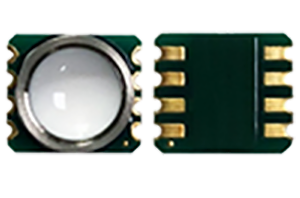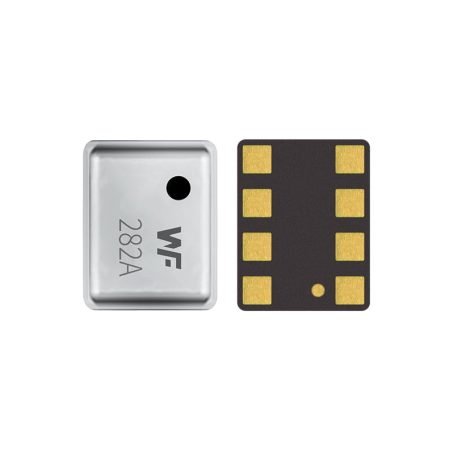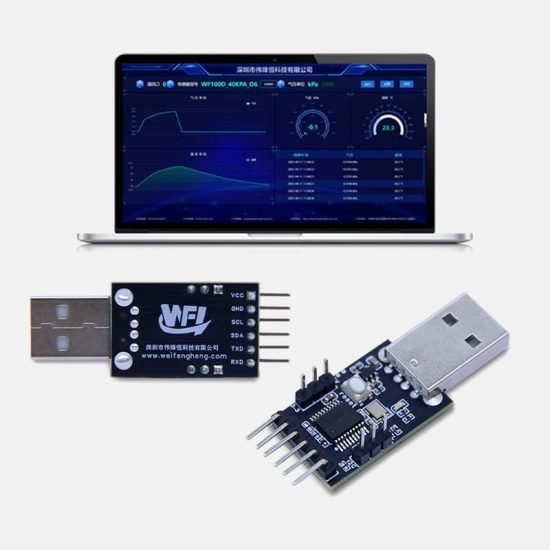Katalog
In specific projects, you need to balance resistive and capacitive MEMS sensors across multiple dimensions—measurement range, accuracy, temperature drift, response speed, package size, and cost. Resistive sensors feature a simple structure and low cost, making them suitable for mid-to-low-precision or wide-range applications. Capacitive sensors offer high sensitivity and minimal temperature drift, fitting high-precision, fast-response scenarios. The final decision should combine application requirements, environmental conditions, and pre-production test results to ensure deep integration between the sensor and the system. Furthermore, evaluating supply-chain reliability, bulk delivery schedules, and long-term maintenance costs can further optimize sensor selection, enabling efficient, stable product performance and an excellent user experience throughout the project lifecycle.
Application Requirements & Functional Fit
The very first step in choosing a pressure sensor is to nail down exactly what you need to measure, under what conditions, and to what accuracy. Clarity here keeps you from endless tweaking later.
Define Measurement Range & Ketepatan
If your system must cover a wide span—say 300–7000 hPa—with around ±0.2 % full-scale precision, a piezoresistive sensor like the WF5803F is the cost-effective choice. It delivers solid linearity in that range and comes in an SMD-friendly package. On the other hand, if you must resolve tiny fluctuations in a narrower band—300–1100 hPa with ±0.1 %FS or even 1 Pa resolution—a capacitive device such as the WF282A shines. Its micron-scale electrode gap shifts generate very high sensitivity, perfect for fine pressure detection.
Dynamic Response & Noise Rejection
When pressure signals swing fast—airflow pulses or mechanical shocks—the sensor’s response time matters. Capacitive MEMS can respond in microseconds and handle kHz-level vibration, whereas resistive bridges typically sit in the millisecond realm, better suited for steady or low-frequency readings. In electrically noisy environments, a differential capacitive layout inherently rejects common-mode interference, while resistive types often require extra analog filtering or shielding.
Environmental Robustness
Real-world deployments face temperature swings, high humidity, corrosive gases, and mechanical vibration. Resistive sensors exhibit significant temperature coefficients and usually need built-in or external compensation to stabilize readings. Capacitive layouts drift less with temperature and humidity, and differential designs cancel errors from thermal expansion. Practically, the WF5803F operates reliably from –40 °C to +125 °C, and the WF282A’s metal can withstand humid, outdoor conditions without issue.
Principle Comparison & Technical Features
Knowing how each sensor works and what its trade-offs are is crucial for making an informed choice.
Piezoresistive Mechanism
Piezoresistive devices use a microfabricated silicon diaphragm whose resistance network changes under pressure. A Wheatstone bridge reads out a nearly linear voltage change. This approach leverages standard semiconductor processes for high yield and small size, but it is highly sensitive to temperature and needs compensation to control drift.
Capacitive Mechanism
Capacitive sensors track tiny changes in spacing between micro-scale parallel plates or concentric cylinders. Diaphragm deflection alters that gap, which shifts capacitance. Differential electrode pairs naturally suppress temperature and common-mode noise, and the linear relationship between gap change and capacitance yields excellent sensitivity for small pressure variations.
Kemasan & Antarmuka
The WF5803F typically comes in an SMD package exposing analog bridge outputs, power, and temperature-compensation pins—ideal for integration with ADCs and amplifiers. The WF282A often ships in a small metal can with an ASIC that presents I²C or SPI digital output, cutting out bulky analog filters and simplifying integration into low-power, digital systems and wireless modules.
Response Characteristics & Kebisingan
Because of its ultra-light movable mass and low internal resistance, a capacitive sensor can achieve sub-microsecond response time and high bandwidth, perfect for capturing fast transients like airflow spikes. Resistive bridges, governed by RC characteristics, typically respond in milliseconds, which is fine for slower or steady-state signals and helps maintain stable mid-to-low-frequency noise performance.
Thermal & Humidity Drift
Temperature shifts directly affect a resistive element’s value, often producing tens of ppm drift per degree Celsius. Achieving stable output demands sophisticated compensation. Capacitive types have much lower temperature coefficients, and their differential designs mitigate both humidity effects and error from material expansion—resulting in superior long-term stability.
Selection Strategy & Workflow
With requirements defined and principles understood, you can map out a step-by-step selection process tailored to your application.
Functional Verification & Rapid Prototyping
Early in development, drop both sensors onto evaluation boards or simple custom fixtures. Test each in real or simulated environments to gauge minimum detectable range, linearity, and noise. Compare how each handles fine-pressure sensing versus broad-span measurement to quickly spotlight the right choice.
Biaya & Supply Chain Assessment
In mass production, piezoresistive parts often cost 20–30 % less per unit than capacitive ones, which is a boon for cost-sensitive, high-volume projects. While capacitive devices carry higher upfront costs, their low power draw and digital interfaces cut calibration and maintenance expenses, improving total cost of ownership. Don’t forget to check wafer and ASIC lead times to avoid supply delays.
System Integration & Compatibility
If your design already includes an analog front end and temperature-compensation circuitry, the WF5803F plugs in seamlessly via its bridge output. For projects demanding digital communication, remote deployment, or ultra-low power, the WF282A’s I²C/SPI bus interface streamlines hookup to MCUs and wireless modules, minimizing external components.
Risk Analysis & Iterative Refinement
Finally, tally up each solution’s potential risks—thermal drift in resistive sensors, parasitic capacitance in capacitive ones—and plan mitigation methods such as shielding or compensation algorithms. Run small pilot production batches, collect failure rates and performance variance, and iterate until you’ve nailed consistent, reliable yields.
Performance Advantages & Adaptability
Lay out the critical performance metrics side by side to see which sensor best fits your real-world needs.
Ketepatan & Resolution
Capacitive sensors like the WF282A can hit ±0.05 %FS resolution with drift under 0.1 %FS, making them ideal for micro-pressure tasks down to ±1 Pa. Resistive types such as the WF5803F typically reach around ±0.2 %FS after thorough multi-point calibration—ample for general monitoring and industrial control.
Response Speed & Bandwidth
The capacitive device’s sub-microsecond response and tens-of-kHz bandwidth excel at capturing rapid disturbances. The resistive sensor’s millisecond response suits slower or steady-state readings, with stable performance and minimal noise at lower frequencies.
Environmental Robustness
WF5803F SMD package can meet IP67 sealing standards, resisting dust, water, vibration, and shock. WF282A rugged metal can shields against EMI and holds up in high-humidity or corrosive atmospheres for long deployments without drift.
Real-World Adaptability
In hot, humid environments, capacitive sensors remain stable with little to no extra compensation. Under heavy vibration or mechanical shock, you can tune the resistive bridge’s damping network to bolster ruggedness—so each sensor type can be optimized for its target conditions.
Pre-Production Testing & Peralatan
Thorough testing before mass production is your final assurance of reliability and consistency at scale.
Three-Point Calibration & Drift Tracking
Use a dead-weight tester to perform 0 %/50 %/100 % span calibrations on every batch. Log sensitivity and zero-offset deviations, ensuring each unit stays within ±0.1 %FS of spec.
Temperature/Humidity Cycling & HALT
Place sensors in a climate chamber cycling between –40 °C and +85 °C at 85 %RH for at least 1,000 cycles. Monitor thermal and moisture drift, verifying long-term stability under extremes.
Dynamic Response & Mechanical Reliability
Drive the sensor with a gas pulse generator to profile rise and fall times. Subject modules to vibration tables and shock testers to prove mechanical endurance under real-world stressors, confirming specs in high-vibration or shock-prone applications.
EMI Testing & Shielding ValidationEMI
Perform electromagnetic compatibility tests on resistive bridges and capacitive differential interfaces. Evaluate shielding, filtering, and PCB layout strategies to guarantee accuracy in noisy industrial settings.
Kesimpulan
Choosing the right MEMS pressure sensor means aligning measurement range, accuracy, response speed, and environmental resilience with your system’s cost and integration needs. The WF5803F offers low cost, wide span, and mature processing; the WF282A delivers ultra-high sensitivity, minimal drift, and direct digital output. By following a disciplined process of requirement mapping, rapid prototyping, risk assessment, and rigorous pre-production testing, you can confidently roll out a sensor solution that meets your performance targets and delights end users.
Pengenalan di atas hanya sekilas tentang penerapan teknologi sensor tekanan. Kami akan terus mengeksplorasi berbagai jenis elemen sensor yang digunakan di berbagai produk, cara kerjanya, serta kelebihan dan kekurangannya. Jika Anda ingin mengetahui detail selengkapnya tentang apa yang dibahas di sini, Anda dapat melihat konten terkait nanti di panduan ini. Jika Anda terdesak waktu, Anda juga dapat mengklik di sini untuk mengunduh rincian panduan ini Data PDF Produk Sensor Tekanan Udara.
Untuk informasi lebih lanjut tentang teknologi sensor lainnya, silakan Kunjungi Halaman Sensor Kami.




There is a subtle orchestration in your prose. Phrases rise and fall with deliberate cadence, forming a pattern both harmonious and evocative.